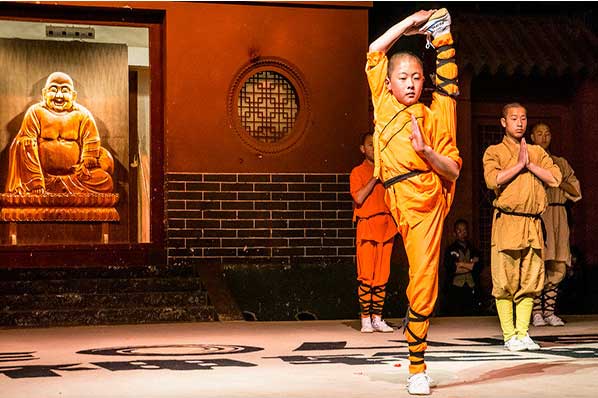In the heart of China’s Songshan Mountain, the Shaolin Temple stands as an enduring symbol of China’s rich spiritual and martial heritage. Known as the birthplace of Zen Buddhism and Shaolin Kung Fu, the temple has withstood the test of time and remains a vital link to China’s past. This article explores the modern role of the Shaolin Temple in preserving and propagating its centuries-old legacy.

1.The Spiritual Role:
At its core, the Shaolin Temple remains a vibrant center for Zen Buddhism. Despite the rise of modernity, monks at the temple maintain a disciplined lifestyle that revolves around meditation, the study of scriptures, and mindfulness in daily tasks. The temple continues to attract spiritual seekers from around the globe, offering retreats and teachings on Zen philosophy.
Moreover, the Shaolin Temple plays a significant role in fostering interfaith dialogue and promoting Buddhist principles of peace and compassion globally. The temple’s spiritual influence extends beyond its geographical confines, contributing to the global understanding and appreciation of Zen Buddhism.
2.The Martial Role:
Shaolin Kung Fu, originating from the temple, is more than a martial art—it’s a physical expression of Zen philosophy. The monks dedicate themselves to the practice and propagation of Shaolin Kung Fu, focusing on both its physical and philosophical aspects.
The temple offers martial arts training to students from around the world. Beyond the technical skills, students are taught the principles of discipline, respect, and harmony between mind and body that underpin the martial art.
3.Preserving the Cultural Heritage:
The Shaolin Temple serves as a guardian of Chinese cultural heritage. From its architectural splendor to its historical archives, the temple holds a trove of treasures from different Chinese dynasties. Efforts are made to preserve and restore these historical elements, contributing to the understanding of China’s past.
4.Promoting Cultural Exchange:
In the modern era, the Shaolin Temple is a hub for cultural exchange. By hosting international events and participating in global forums, the temple shares the richness of Chinese culture and the teachings of Zen Buddhism and Shaolin Kung Fu with the world.
In the modern world, the Shaolin Temple plays a crucial role in preserving and promoting the legacy of Zen Buddhism and Shaolin Kung Fu. It stands as a beacon of China’s cultural and spiritual heritage, serving not only as a sanctuary for spiritual and martial arts practitioners but also as a bridge connecting China’s past with its future.